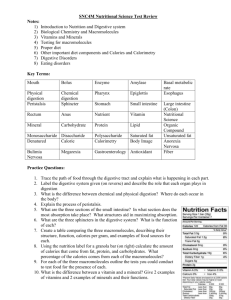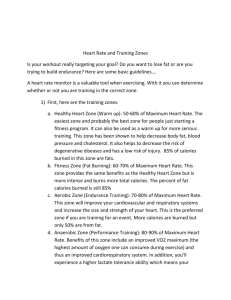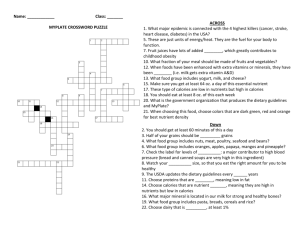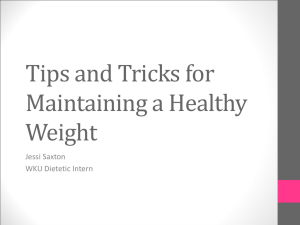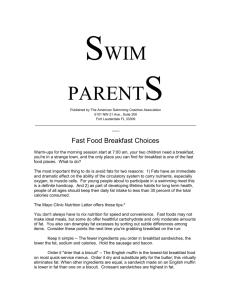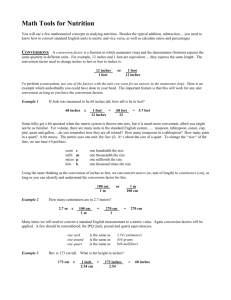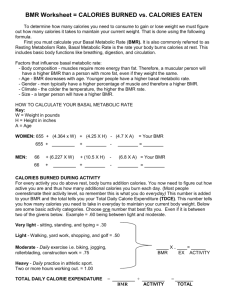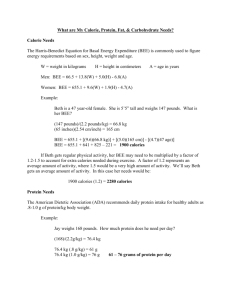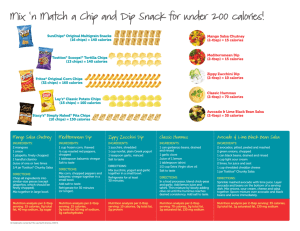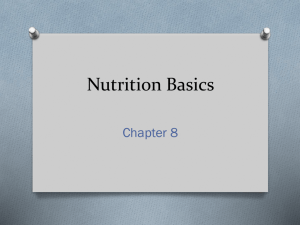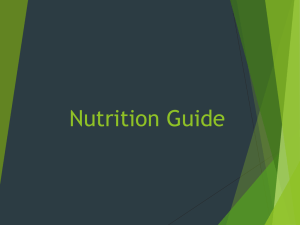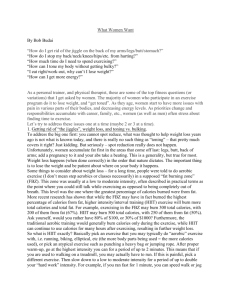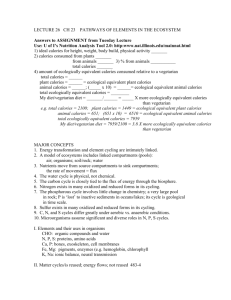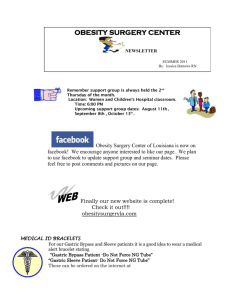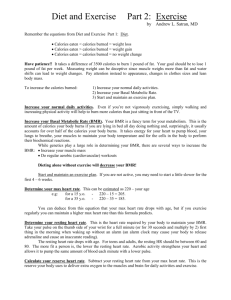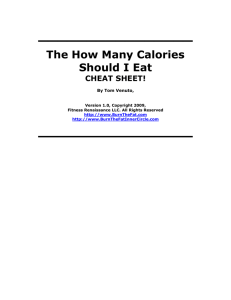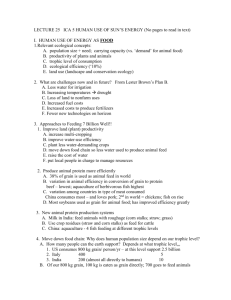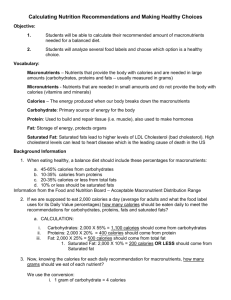Lab
advertisement
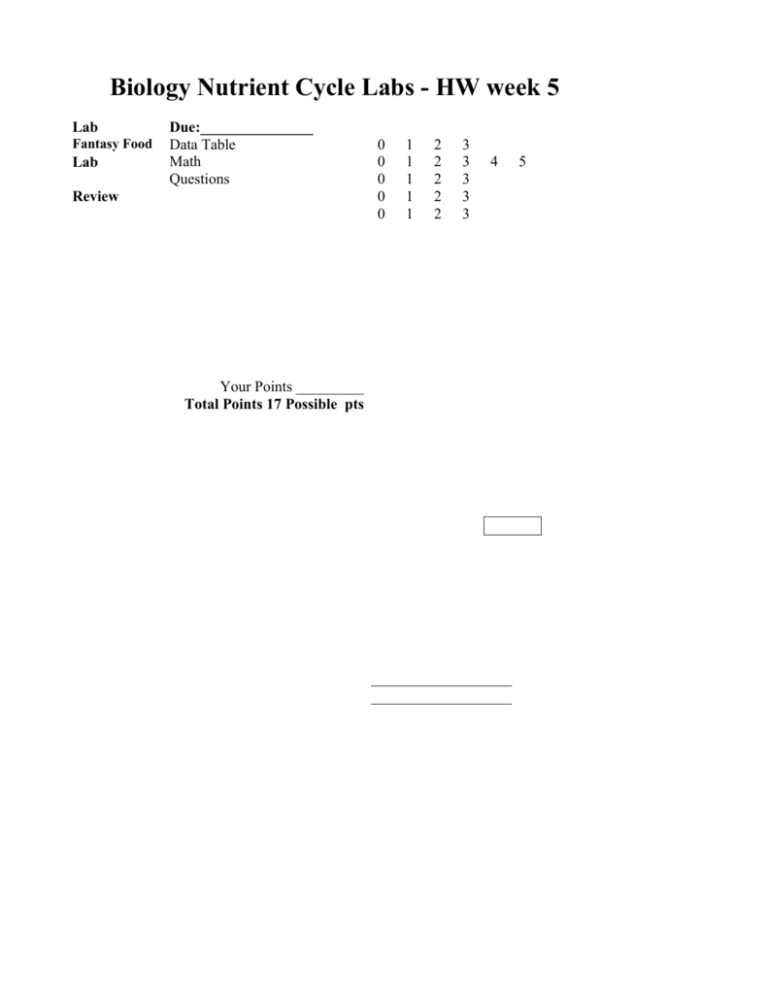
Biology Nutrient Cycle Labs - HW week 5 Lab Fantasy Food Lab Due:_______________ Data Table Math Questions Review Your Points _________ Total Points 17 Possible pts 0 0 0 0 0 1 1 1 1 1 2 2 2 2 2 3 3 3 3 3 4 5 Fantasy Food Log (USE table in homework packet at the back) Directions: Design a make believe (FANTASY) diet using the classroom packets given in class by listing something to eat for breakfast, lunch and dinner and snacks (optional). Then add up each column. After totaling your numbers you can determine if you went over or were under your recommended daily amount of nutrient intake. Total Calories Fat gram(s) x 9 Cholesterol Sodium (mg) = fat calories (mg) Breakfast items 1. 2. 3. Lunch items 1. 2. 3. Dinner items 1. 2. 3. Snacks Total: add breakfast lunch and dinner Complete the following equations: 1. What is your BMR? __________ (show work here) Hints: Note kg’s = (weight in lbs) x (0.41) Basal Metabolic Rate = (Weight in kilograms) x (0.8) x (24 hours) 2. What is your FPE? ___________(show work here) Food processing energy = 10% of your Basal Metabolic Rate 3. How many calories did you burn during your day of driving? _________ Activity = the energy used to drive, take pictures, etc. = (BMR)(0.35) 4. What is the total number of calories you burned in this day? _________________ (show work here) Total calories = (Basal metabolic rate) + (Food processing energy) + (Activity) Questions: 5. How many calories did you consume? 6. What percent of these calories came from fat? 7. How much are you over or under the recommended fat percentage? (30% RDA) 8. How many milligrams of sodium did you consume? 9. How much are you over or under the recommended sodium allowance? (2400 RDA) 10. Did you go over your cholesterol limit? (300 RDA) 11. How much above or below the cholesterol limit were you? 12. Let’s estimate the number of calories you burn in a typical day: (use back of notes packet to help by determining what activities you did today) EXTRA CREDIT If you did not use all the calories you ate, then use the tables of exercise data to write a specific plan for using the surplus calories. Thus, preventing their storage as fat: Be sure the math is clearly shown. Test Review: Part A. 1. Be able to label the different parts of the digestive system and know the function of each. This is a big portion of the test so you must study it. Part B. 2. Write a list of the different enzymes we discussed below. Next to each enzyme list what macromolecules each enzyme breaks down and where that particular enzyme is produced. 3. Review macromolecules and their monomers, structural formulas, chemical formulas, etc. 4. Write the one formula used by Heterotrophs here: + 5. Where does absorption of food particles take place? 6. What assists with their absorption? 7. Where the different sphincters located and what are their functions? 8. Complete the following table: + Enzyme Where made Job Where it does its job Amylase Pepsin Rennin Lipase Part C. 9. What is the difference between mechanical, chemical and physical digestion. Give an example of each. 10. In terms of digestion, which macromolecule takes the longest to digest? What is the shortest? Which gives you more energy? What helps you to feel full? 11. What is a vestigial organ? What is peristalsis? 12. What are some of the problems that can occur with the digestion system discussed in class?

